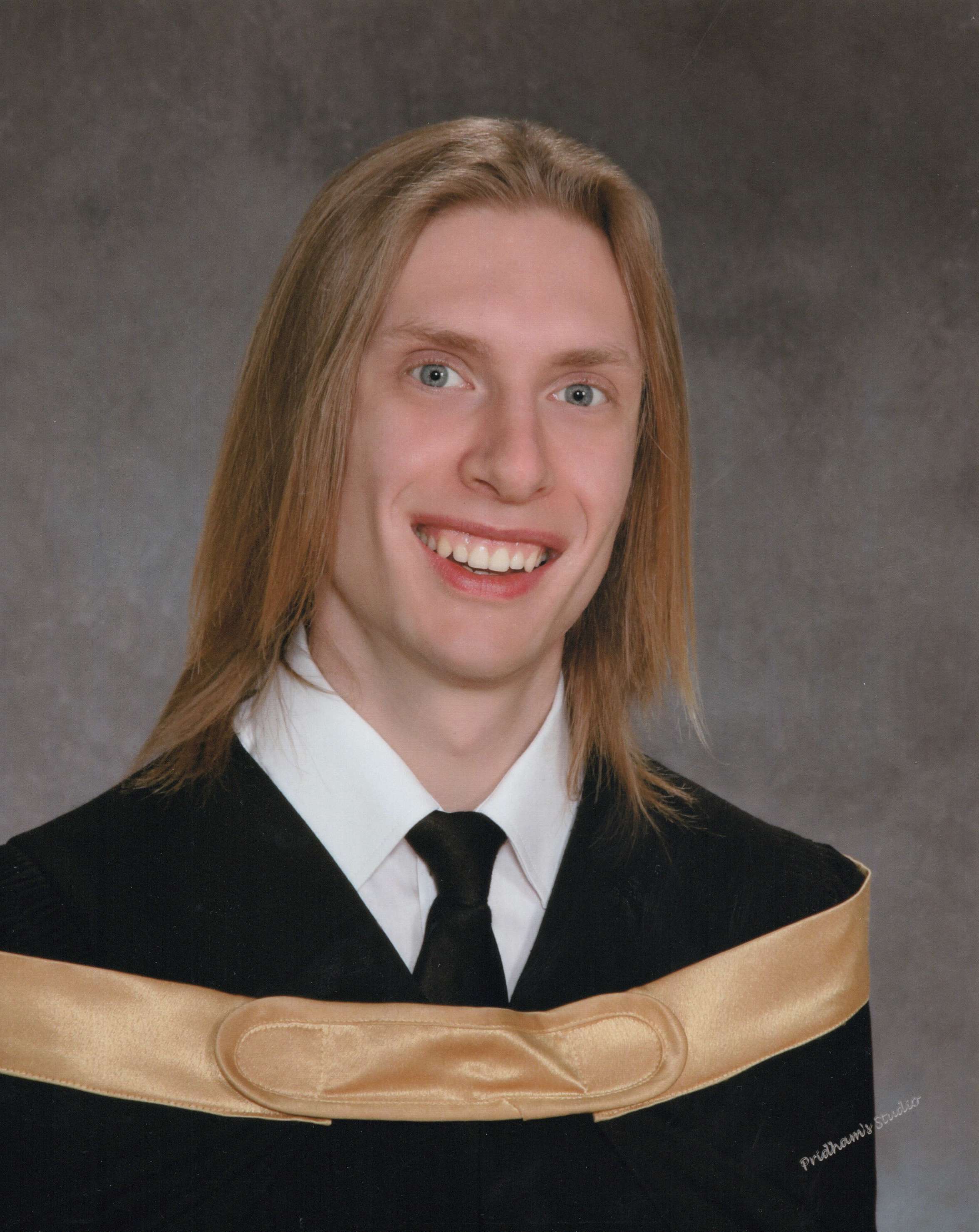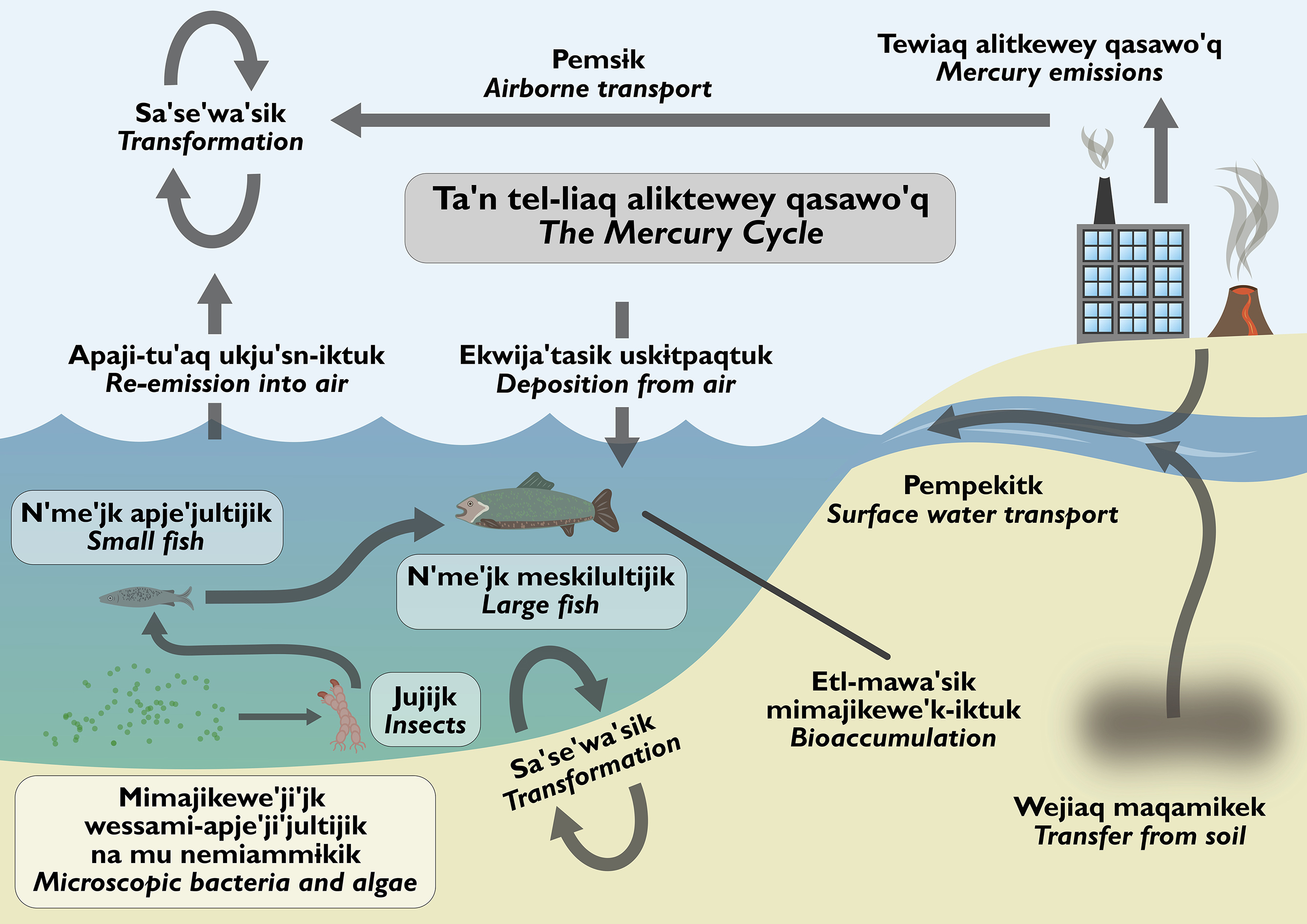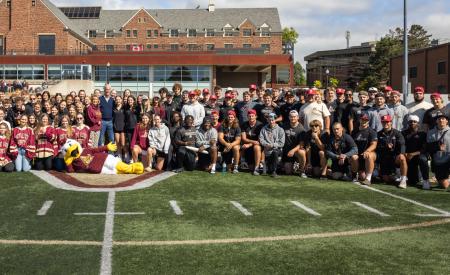Environmental science grad connects aquatics research with Mi’kmaw language
Environmental science graduate William Chapman recently published a paper that strongly demonstrates his unique path of education at Mount Allison. Majoring in environmental science and minoring in modern languages, literatures, and cultures, Chapman has a desire to connect communications and science, something he notes as a gap in his field of study. He is certified in English, French, and Norwegian and has always had a keen interest in languages.
Through the Intro to Indigenous Studies class at Mount Allison, Chapman met Indigenous Language Keeper Gordon Francis, who teaches Mi’kmaw. That introduction led to Chapman receiving one-on-one lessons with Francis for the past two years.
“Aquatic science research has applications for Indigenous communities, especially when we’re talking about contaminants in wildlife,” says Chapman. “First Nations communities have experienced a lot of the effects of pollution. So, if we have knowledge to share, how do we best go about doing that?”

Chapman hopes to clearly communicate research and findings in aquatic science in a way that is accessible and understandable to its intended audience. He hopes that with this in mind, published papers and important conclusions in sciences will become more accessible, especially to people outside the field.
“The takeaways from braiding technical scientific language and an Indigenous language, such as Mi'kmaw, are many,” says Chapman. “Efforts are warranted given calls to action in the natural sciences and the wide-reaching implications of aquatic sciences on many intersecting audiences, including Indigenous participants in knowledge generation activities.”
He has had several unique learning experiences while studying at Mount Allison in both languages and environmental science, including summer research opportunities alongside Associate Professor in the Department of Geography and Environment Dr. Josh Kurek.
“William had a simple idea to combine his interest in languages and his summer research in aquatic science,” says Kurek. “What we learned working with an Indigenous Language Keeper was important enough that we felt our experiences should be shared with the research community so that others could benefit and build on our knowledge outputs.”

During his time at Mount Allison, Chapman also created a unique series of maps of the Miramichi Watershed, Barbitog Rivers, and Restigouche River Watershed. That project was inspired by Chapman’s own curiosity after a field study trip to Miramichi in his environmental science class. Made to resemble a subway map system, the end product is both eye-catching and practical. Proceeds from the sales of the printed maps have been donated to river conservation programs in the region.
Chapman is now pursuing a master’s degree in biology at McGill University, where he will focus on lakes and environmental changes they experience.
The full paper is available through open access on the Facets Journal.




